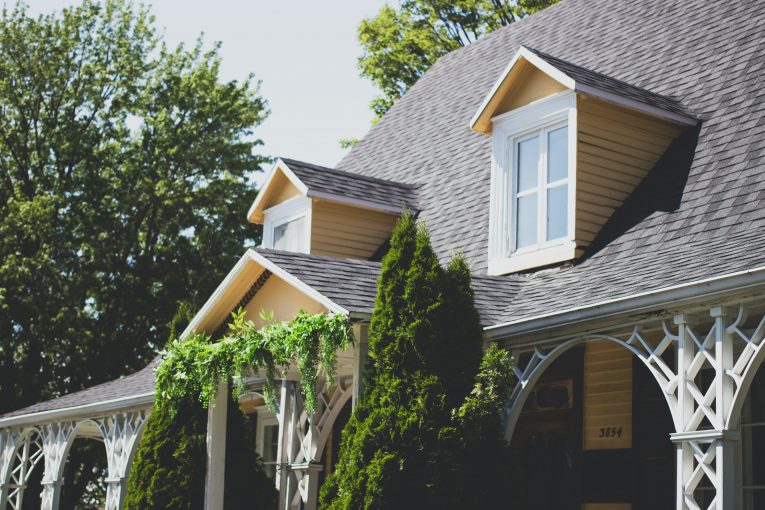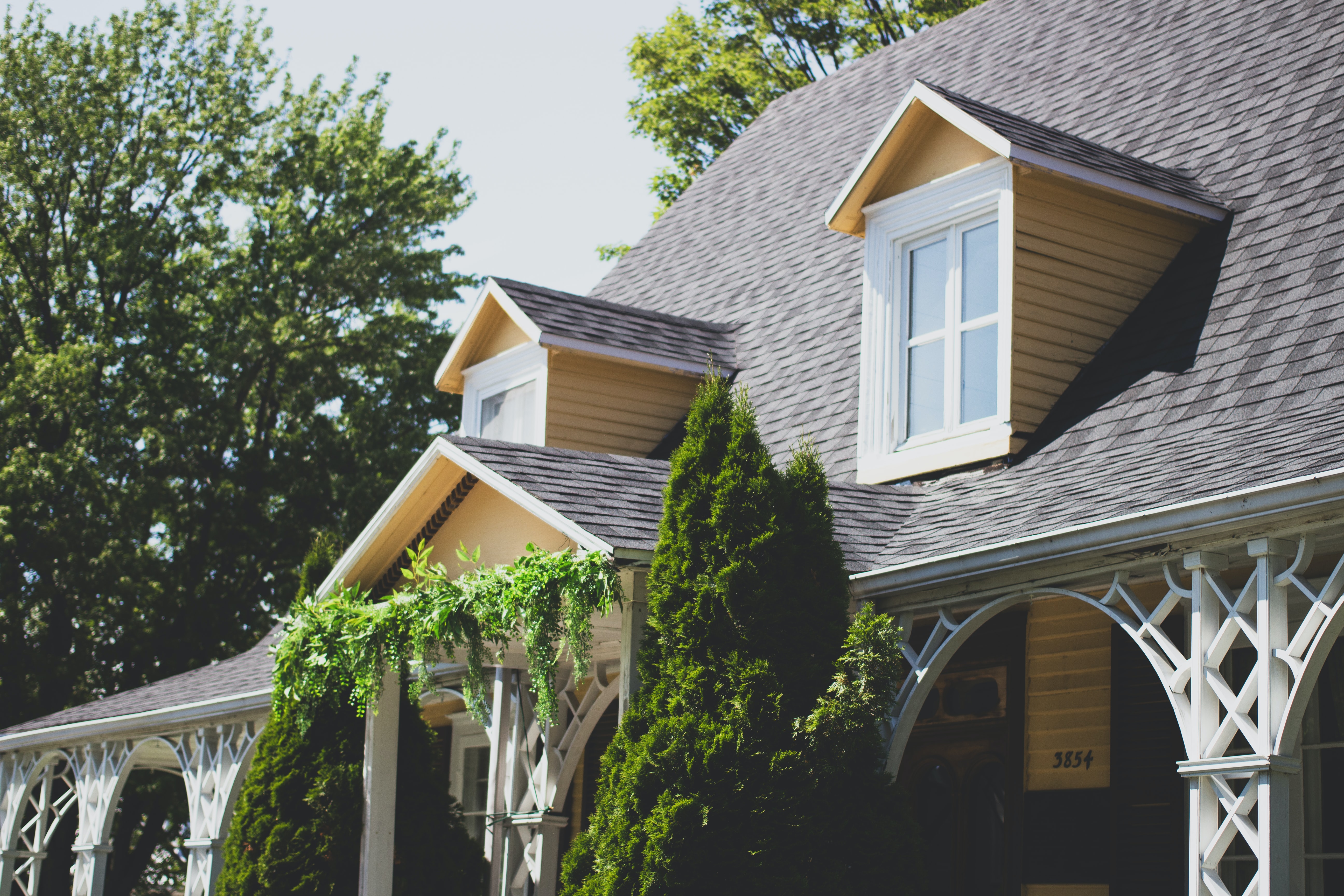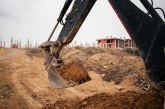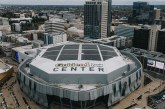

By David M. Greenwald
Executive Editor
It seems like everyone has a theory about how to address the housing crisis. Right now, California seems to have made its bed with smaller, more dense housing near transit that can connect people to jobs.
While there is general but not universal consensus that we need more housing, there is a fierce (and very interesting) debate over how to produce it.
For his part, Joel Kotkin of Urban Reform Institute, in a column today in the Los Angeles Times, notes, “In a drive to promote density and transit use, the state has also disfavored the kind of housing, especially the single-family variety, that many aspire to own, particularly in the pandemic.”
He argues that “this trend works against upward mobility for the working class, because homeownership remains the predominant means by which the non-rich build assets.
“Urban planners are right to say that the solution lies in more housing production,” Kotkin writes. “But the kind of housing they favor — generally expensive, small and densely packed — does not necessarily reduce prices.”
For example, he cites the work of Patrick Condon, a professor at the University of British Columbia, who argues that upzoning in the city has not resulted in less expensive  housing in Vancouver, which is one of the most expensive cities in North America.
housing in Vancouver, which is one of the most expensive cities in North America.
Condon’s argument: “We have incrementally quadrupled the density of Vancouver, but we haven’t seen any decrease in per square foot costs. That evidence is indisputable. We can conclude there is a problem beyond restrictive zoning. … No amount of opening zoning or allowing for development will cause prices to go down. We’ve seen no evidence of that at all. It’s not the NIMBYs that are the problem – it’s the global increase in land value in urban areas that is the problem.”
Kotkin points out that the fast population growth was in areas like San Benito County (south of the Silicon Valley) and in San Joaquin County.
We were seeing this pattern before COVID hit, but since the pandemic, “this pattern has intensified, with San Francisco, Los Angeles, San Diego and Santa Clara counties all losing population while growth continued farther east in Riverside, Fresno, San Joaquin and San Benito counties.”
Kotkin continues: “Exurbs, once written off by urban experts as the country’s ‘new slums,’ are now nationally the fastest-growing areas in the country.”
He further points out: “The only California metro area listed among the 10 most attractive to millennials, according to the National Assn. of Realtors, is, of all places, Bakersfield.”
From this data, he concludes: “Rather than push more people into the least affordable areas, perhaps it’s time to revisit suburban and even exurban housing.”
It is interesting stuff. The overall data suggests that the problem is the demand for housing—even though some higher density build out still far outstrips new supply.
But before you see Kotkin’s plan as a panacea, look at the next portion of his column.
After talking about potentially advantageous developments which “could help relieve housing pressures on urban and inner-ring suburban areas,” we run back into a familiar problem.
“But under current regulations, such developments, even after getting local approvals, can take decades to move forward,” he writes—sound familiar?
And then there is this: “The lack of affordable housing and policies that constrict housing development hit younger working- and middle-class people — including people of color — hardest.”
You don’t think of the new suburbanite population as being people of color—but they are. Kotkin writes, “95% of all new suburbanites over the last decade were people of color.”
However, this landscape is having a huge detrimental impact on people of color.
“Homeownership rates statewide are very low compared with other states and painfully low for minorities,” he writes. The numbers are stunning: “In metro San Francisco and metro Los Angeles, the African American homeownership rate is under 35% and for Latinos under 40%.”
Furthermore, “At the same time, housing policies and economics have resulted in increased racial segregation in the great majority of metro areas.”
There is also a downside to the suburbs as the hub of housing growth. Koktin notes that suburbs have historically been appealing due to their relative affordability, particularly for first-time homeowners, but there is a downside to this kind of growth.
Critics will counter that more suburban growth “is environmentally unsustainable.” Kotkin responds though, that “future developments need not be heavily auto-dependent, especially if employment patterns change.”
Here he cites the work of Alan Berger, who believes that “well-planned developments could reduce greenhouse gas emissions by using rooftop solar, electric cars and eventually autonomous taxis.”
Here’s the thing: housing as Kotkin points out is a way for younger people and especially people of color to build assets and financial stability. What we have seen over the last several decades has been increased racial segregation in the great majority of metro areas which has resulted in the concentration of poverty.
That concentration of poverty has been fueled by white flight (and to some extent Black flight where middle class blacks have been able to flee the cities for suburbs, leaving behind inadvertently much worse conditions) and has created our highly segregated residential patterns and trapped many into a cycle of poverty, crime, and dependency.
Kotkin’s argument here is intriguing, but it runs into a similar problem we see with urban development—“regulatory hurdles”—and other challenges.
His argument is that “making it possible for families to live and work outside the most expensive urban areas will be key to upward mobility for a new generation of Californians. That goal is still attainable, but it will take new thinking to turn it into reality.”







I have theory that there isn’t one, and that it’s been manufactured by those with an interest in “solving” it.
The state’s population isn’t growing. And it won’t grow, if jobs and housing aren’t purposefully created.
It really is about that simple.
The housing market is starting to cool, as a result of diminishing demand at the price pursued. In other words, supply-and-demand at work.
The housing crisis is that housing isn’t affordable near where jobs are being created. And jobs are created in places where talent and financing agglomerates. Businesses are not going to set up shop in Oklahoma simply because the land is cheap and housing is available. Businesses are going to go where they can more easily access the resources they want. That’s why companies have continued to move into the Bay Area and likely will continue to do so. This isn’t about being a “statewide” problem–it’s a set of distinct regional problems. So the contention about whether population is growing or not is largely irrelevant given that the population in the areas with housing problems continues to grow.
The Sacramento region is not particularly a “hub” of employment (outside of government work – including UCD in all its forms), especially when it comes to the technology industry. Despite the efforts of people like Broome.
It is somewhat dependent upon the building industry (Ponzi scheme). Probably a big reason that their politician friends pursue it, despite what their (actual) constituents might think of it.
Austin is increasingly becoming a technology hub, and their housing prices are rising accordingly. Again, there’s a net outflow of population to places such as Texas.
One would have to look at “who” is moving into the region (such as the new development south of Highway 50 in Folsom), to determine the reasons that they’re doing so. Each city is likely different, regarding where its new residents are employed (if they’re employed at all). One would also have to look at their point of origin (where they “came from”).
For example, new sprawl in cities that are closer to the Bay Area (such as Manteca), or closer to the Los Angeles area (such as the “Inland Empire”) are likely appealing to families who have at least one earner traveling to their respective, more-distant employment hubs.
If the state actually took action to reign-in sprawl, their “forced density” (to accommodate even more growth in the technology industry) might have credibility. As it is, they do not have any credibility, and are acting as shills for their friends in the technology and construction industry, among others.
Nor has any reason been put forth regarding the reason that the technology industry, for example, “needs” to grow (from the state’s perspective). This “belief in continual growth” (also known as a Ponzi scheme) is the real problem, and is also related to the $1 trillion dollar unfunded liabilities that the state is facing – despite pursuing growth.
Can it be any more clear than that, to you?
https://www.newgeography.com/content/007132-minorities-dominate-suburban-growth
So from David’s own (selected) article in support of sprawl, we see the predominance and growth of whites and Asians in the technology industry and other high-paying jobs in urban cores. While pushing-out all others, to the “burbs”.
Sure – send minorities out to the “burbs”, rather than be concerned about wealth discrepancy.
By the way, is there any breakdown regarding “different” burbs, in regard to skin color? For example, is new housing in Roseville and Folsom more “white” or “Asian” than say, Elk Grove, Rancho Cordova, and Natomas?
In any case, I’m glad to see David (finally) acknowledge that efforts such as Wiener’s won’t do anything regarding affordability, and will likely result in less “diversity”, as he defines it at least. Again, one only has to look at the underlying financial support behind those efforts. (It’s the technology industry itself.)
Just to be clear, I just presented a new viewpoint, I didn’t weigh in on whether I agreed with it.
“Just to be clear, I just presented a new viewpoint, I didn’t weigh in on whether I agreed with it.”
Just to be clear I’ve been making these arguments for a long time. Of course nobody is considered an expert where they live so it is no surprise that you think these ideas haven’t been presented and represent a new viewpoint.
Ron, how does Kotkin’s ex-urban approach play out here in Davis?
It doesn’t play out in Davis. That ship sailed with Measure J. Starter homes are built in all the surrounding communities for UC Faculty, staff and professional alumni that stay and form families here.
Others give up and move to places like Boise.
I agree that it doesn’t play out in Davis. Even without the specifics you’ve listed, Kotkin’s approach bypasses the suburbs because they have already seen land prices rise into a price range that is “unaffordable” when compared to land prices in the comparative ex-urban communities.
We agree on the outcome but not on the process. The reason housing prices go up is mostly because of land prices going up. In Davis land prices have gone up because of the limit line created under Measure J. It is likely that without Measure D it would take some time to work off pent up demand.
Even so, as people move up the housing food chain, added supply makes existing starter homes more affordable. Thus allowing greater opportunity for people to start to acquire property, and live the life of freedom envisioned by John Locke, who inspired Jefferson, when he heralded in his Treatise on Government “Life, Liberty and Property.”
.
Ron, I encourage you to read the whole LA Times article, not just the Vanguard’s excerpts. Creating new ex-urban communities, where both the housing and the employment base is local ,arguably does not fit the classic definition of sprawl.
Ron O
First there wasn’t a housing crisis, but now there is a housing crisis that is pushing minorities out to the suburbs? And these two contradictory comments are in the the same post????
It is the result of higher-paying jobs (that minorities have been largely “locked-out” of) in places such as the Bay Area. (With the exception of Asians.)
Do you support this type of “banishment” and segregation?
This Vanguard article was/is a very frustrating exercise in “reading for meaning.” After I had reached the bottom of the article the first time, my sense was that Kotkin was an academic hop-scotching around various aspects of an important topic … without actually coming to any kind of practical bottom-line (solution). So, I went back up to the beginning of the Vanguard article and read it again.
Unfortunately, when I got to the end of the article after the second reading, I was still at a loss for what the conclusion was. So I clicked on the link to the whole LA Times article the Vanguard had provided, and resumed my search for some kind of conclusion/solution … and I actually found one in a whole section of the article that had not been included in the Vanguard. That section was as follows:
.
I’m not sure why the Vanguard chose not to include or discuss that part of the article, but it definitely resonated with me. Building exurban housing on land that has not already been driven up in price per acre (Texas and Tennessee have lots of land like that) is a good prescription (but not the only one) for actually building new housing that is more affordable. The obvious challenge is getting jobs to the residents of that new hosing in its significantly more remote location(s).
Existing suburbs like Davis, where land prices have already escalated to the level where the costs of new housing are “unaffordable” won’t be able to benefit from the evolution of the jobs marketplace that the article describes, but at a California state-wide level, Kotkin’s ideas may be a path to real progress.
Ironically, if one keeps saying the wrong thing for the wrong reasons for a long time, sometimes they’re right. That’s the case with Joel Kotkin who denies the existence of climate change and has been promoting suburban and exurban growth for the couple of decades that I’ve followed him. He often does correctly read the situation, much as Karl Marx correctly identified the misery that capitalism was creating. But like Marx, Kotkin’s solutions have been far off the mark.
But the passage that you quote aligns with what I’ve posted here for a year or more–that remote work could hollow out the core business districts that have been the engines of job growth and attractants for employees that have created the housing crises around those job centers.
That said, Davis is not necessarily in the same position that the core cities such as those in the Bay Area or surrounding the City of Los Angeles are in. Davis can easily accommodate the housing growth that those communities cannot. It is not physically constrained–it’s only an imagined boundary that prevents more housing here.
Some may argue that we would be consuming prime farmland. Yet California is going to be forced to retire 750,000 to 1,000,000 acres of farmland over the next two decades to meet the new groundwater restrictions law (SGMA). Water will be moved from less valuable farmland to where it is more valuable. That means that owners of that land will be looking for other uses of that land. The most likely land to be converted is that which borders cities.
Leap-frog development is always “off the mark”, both environmentally and fiscally. But yeah, I’m not surprised to see you (now) agreeing with this guy, regarding his latest “solution”.
Compare this to:
The discrepancy between these two comments (in the same article, no less) is what is commonly-known as speaking out of “both sides of one’s mouth”.
“Whose” growth? The Bay Area’s?
All urban growth boundaries are “artificial”, in the eyes of some. These are the same people who see nothing wrong with development patterns in places like Los Angeles. They are also the same people who would have us believe that once a region runs out of water (e.g., due to irresponsible practices), it’s a “perfect time” to then pursue even more sprawl on farmland.
They are also the same people who believe that (despite the patterns and results so far), even more growth will solve environmental problems.
Ron O. asserts in his first comment that California’s “population isn’t growing.” But the census bureau notes that the growth in the last decade in California has been 6.1% – which is lower than the national average of just above 7%. (See NY Times April 26, 2021 “Why California’s Growth has Slowed (and Why Demographers Aren’t Surprised). But in his second comment Ron (sort of) contradicts himself when he asks about racial/ethnic breakdowns in the “burbs.” Suggesting, to me at least, that it ain’t so simple as he asserts in the first comment.
California population drop caps long trend | CalMatters
https://calmatters.org/commentary/2019/05/demography-is-californias-destiny/
It will be interesting to see what happens when this last “wave” (of millennials) passes through, as I understand that subsequent generations will be smaller.
Your comment is not explained.
I had asked if new housing in places like Roseville and Folsom is “whiter” or “more Asian” than places like Elk Grove, Natomas, Rancho Cordova, etc.
It is complicated, in that Asians are counted as “people of color” in the article that David cited in one spot, while they’re “grouped together” with whites regarding the increased population in the urban core (which pushes out all other colors – as noted in another spot). (I think this is true within the same article, but would have to review it again to confirm.)
In any case, those making racial arguments should probably “decide” whether or not Asians should be grouped with “whites”, vs. “people of color” – for consistency.
Actually, that same lack of consistency sometimes applies regarding Hispanics, as well.
Ron O
That both Robert and I made the same observation means that what you’ve communicated appears contradictory. How ethnic groups are counted doesn’t appear to be relevant to the contradictions that you are expressing.
You’re claiming that “how ethnic groups are counted” is irrelevant to an article which specifically “counts ethnic groups”? Really?
Always a good idea.
But my initial comment referenced a different article that David cited.
“Sprawl” does not have a single, confirmed definition.
“Exurban housing” might be best-described as “LeapFrog Development”. Probably the worst choice (regarding the environment) of all.
I agree regarding Davis, but disagree regarding how “progress” might be defined.
It sounds more like development that occurred in the past (LeapFrog development). A complete and total environmental disaster, in a warming semi-desert state.
Why the big push to increase the population to more than 40 million?
Hey – if places like Texas, Tennessee, Nevada, and Georgia (Atlanta) want that, more power to them. They are what I’d call a “lost cause”. (For that matter, I don’t try to tell the Taliban how to run their new country, either. Nor do I have much influence over India and China, let alone Roseville, Folsom, Elk Grove, Natomas, Rancho Cordova, etc.)
At gunpoint, I’d prefer SB 9 and 10, over that!
.
That is not necessarily true Ron. The “frog” would not “leap” from job to residence as it does in “LeapFrog Development.”.
Kotkin’s premise is that the restructuring of the jobs marketplace will mean that the commute for the ex-urban job holder will not be to an urban hub, but rather, both the jobs and the residences would actually be located geographically and environmentally in close proximity to each other. The resultant commute from residence to job would be zero or very close to zero.
It meets part of the definition, perhaps not the other part (assuming that jobs are created):
https://en.wikipedia.org/wiki/Leapfrog_development
But again, I don’t really see the point of pursuing this – which has enormous costs and environmental impacts.
Even if jobs were to be created within the development, that (by no means) is the end of the story regarding environmental impacts (or driving, for that matter).
Just noticed this, regarding a (let’s just say “creative”) definition of “infill” from the Wiki article cited above:
I’d call that a “developer definition” of infill.
Note that Ron Oertel isn’t a Davis resident and has no apparent stake in decisions about Davis’ future. His opinions cannot be described as reflecting the opinions of stakeholders in Davis. As a resident of Woodland it is not clear what his actual intent is vis a vis Davis policies.
How is your comment on topic, and not considered a personal attack?
I already told you that I’m not going to provide personal information.
Also, the article itself is not Davis-focused.
By the way, are you ever concerned that people like Aguiar-Curry and Boudin weigh-in on Texas’ new abortion law, which is being decided by the Supreme Court?
ReplyReport comment
Richard,
What difference does Ron’s residency make for a discussion in an internet forum? It’s not like our opinions are votes in a decision making process. Just imagine Ron represents the no growth citizens of Davis. I don’t think it’s too far of a stretch of the imagination to believe that there are plenty of those in Davis.
Ron & Matt.
“Leap Frogging” by developers comes down to (like just about everything) MONEY. The big builders build and make money at greater scales than many infill opportunities. The other thing is the expense and restrictions of infrastructure support and improvements for infill properties. For small and medium builders that build smaller numbers of homes but make up for it with higher quality or custom to semi-custom homes…infill is a good fit for them because they don’t have to extend or improve infrastructure or push density limits to get their ROI. All that is balanced out by the costs of extending or creating new infrastructure peripheral development. That’s why you’ll rarely see a 10 unit or smaller (or even a 50 unit) project developed and brought into the city. Because in order to make it work, you have to build out and sell a lot of homes.
It will also be interesting to see what happens when millennials inherit their parents’ (boomer) property and wealth, as I read somewhere that this will be the largest generational transfer of wealth in history.
At that point, the millennials will become the “wealthy homeowners”, if they aren’t already by then. And then the phrase will finally shift from, “o.k., boomer” – to “thank you, boomer” (otherwise known as Mom and Dad).
Although the boomers will (then) be remembered with fondness, they won’t be around to hear the subsequent “thank you”.
I’d also suggest examining and recording the skin colors of those who moved into The Cannery, in regard to the comparison above. (A tongue-in-cheek comment, but one with a probable point.)
I suspect we already know what it will primarily be, at WDAAC / Bretton Woods.
Actually, some of this comparison could be made in regard to turnover of existing housing, as well.
Wouldn’t it be a whole lot easier (for those obsessed with this) to simply require a particular percentage of various skin colors, in regard to future occupancy of any new or existing housing? Why “beat-around-the-bush”, regarding this? Or, if you want some “flexibility”, how about a particular “range” for each color?
Why do you keep commenting on what might happen in Davis where you have no connections to the community other than commenting on this blog?
*Yawn*
How is your comment on topic, and not considered a personal attack?
I already told you that I’m not going to provide personal information.
Also, the article itself is not Davis-focused.
By the way, are you ever concerned that people like Aguiar-Curry and Boudin weigh-in on Texas’ new abortion law, which is being decided by the Supreme Court?
You can answer the question without disclosing personal information.
A year or three ago would have dismissed that idea… since then, from folk I’ve known that is true story… not a great place for “progressives” to feel at home at, but for moderates or conservatives, yes.
The areas around Boise are relatively good in climate, and much more affordable. But as to the latter, that may change, too, once the word gets out… but not soon…
But don’t see us moving there… either stay put (we got in Davis in the early 80’s), or use our equity to live closer to kids/grandchild… real doable…
But we’re “privileged”… even tho’ we came from circumstances that were not quite so… financially…
I remember about 4-5 years ago running into a booth at the Farmer’s Market one Saturday morning and talking to a planner and a guy that I later figured out to be the Mayor at the time….Davis something. I think they were there to inform or get input about downtown plans….I don’t remember. Anyway… at the time I told them how disappointed I was in Grande Village. How it was just another bunch of single family homes. I told them how it had been a couple years since I had moved from San Francisco and that I missed walking to neighborhood restaurants, stores, coffee shops, bars…etc…I think he tried to talk about how that was kind of what they wanted for the downtown…but that doesn’t help me and my desire to walk to these things (downtown is about 3 miles down and back from my house…not bad but not convenient). I thought that Grande Village could have supported some higher density housing and even better some neighborhood mixed use retail; a local coffee shop, a restaurant a bodega/store. To this day, every time I walk by a certain house on the North Davis Greenbelt near the Covell Park tennis courts, I can see into their side yard patio and home and I think it would be awesome to serve beer, wine and tapas to people walking the greenbelt path from that patio next to the greenbelt.
So my solution is SUBURBAN NEIGHBORHOOD COMMUNITY DEVELOPMENT THROUGH MIXED USE HIGHER DENSITY AFFORDABLE HOUSING. When I lived in San Francisco I was able to explore all of the various neighborhoods in the city. Many of those neighborhoods are almost like small towns unto themselves. They have their own mini-downtown areas. I lived in Fremont for almost 2 years and despite it’s reputation as part of the Bay Area suburban sprawl, it had it’s neighborhoods too. In fact it was founded when 5 towns came together and incorporated. Those towns are districts now and some of those like Irvington are almost like little mini-towns inside of Fremont. Niles is almost like a remote small town outside of Fremont with it’s own local neighborhood coffee shops, restaurants, bars…etc… Anyway…the idea is that you can create a greater sense of community by creating gathering places like restaurants, coffee shops…even bars (if such a thing like neighborhood bars could exist in Davis). Neighborhood retail exists to a certain degree in Davis. You have The Market Place, University Commons, the 8th Street Shopping Center, the Coop Shopping Center….there’s some little shopping center at 5th and San Rafael. But they’re all just strip malls next to residential areas. To create a community gathering place you need to focus the neighborhood on the retail area through higher density mixed use buildings. But how do you combat gentrification affecting housing prices? By creating community affordable and workforce housing suburban urban mixed use projects. Should all those shopping centers be rezoned, knocked down and redeveloped? Absolutely. But It can’t just be those sites that can create these kinds of neighborhood communities. IMO, you could develop near or on some parts of the parks to create public affordable housing and community based retail centers to add to the community gathering in the parks. I’m not saying to pave over the parks…absolutely not….but I do think development of some mixed use retail and affordable housing could help some of the affordable housing problems in Davis and possibly help the city generate revenue by renting out a mix of affordable, workforce, market rate and retail units.
Bottom line, I want to be able to conveniently walk to get my coffee, buy food, go out to eat and drink a beer and be able to stay in my neighborhood.